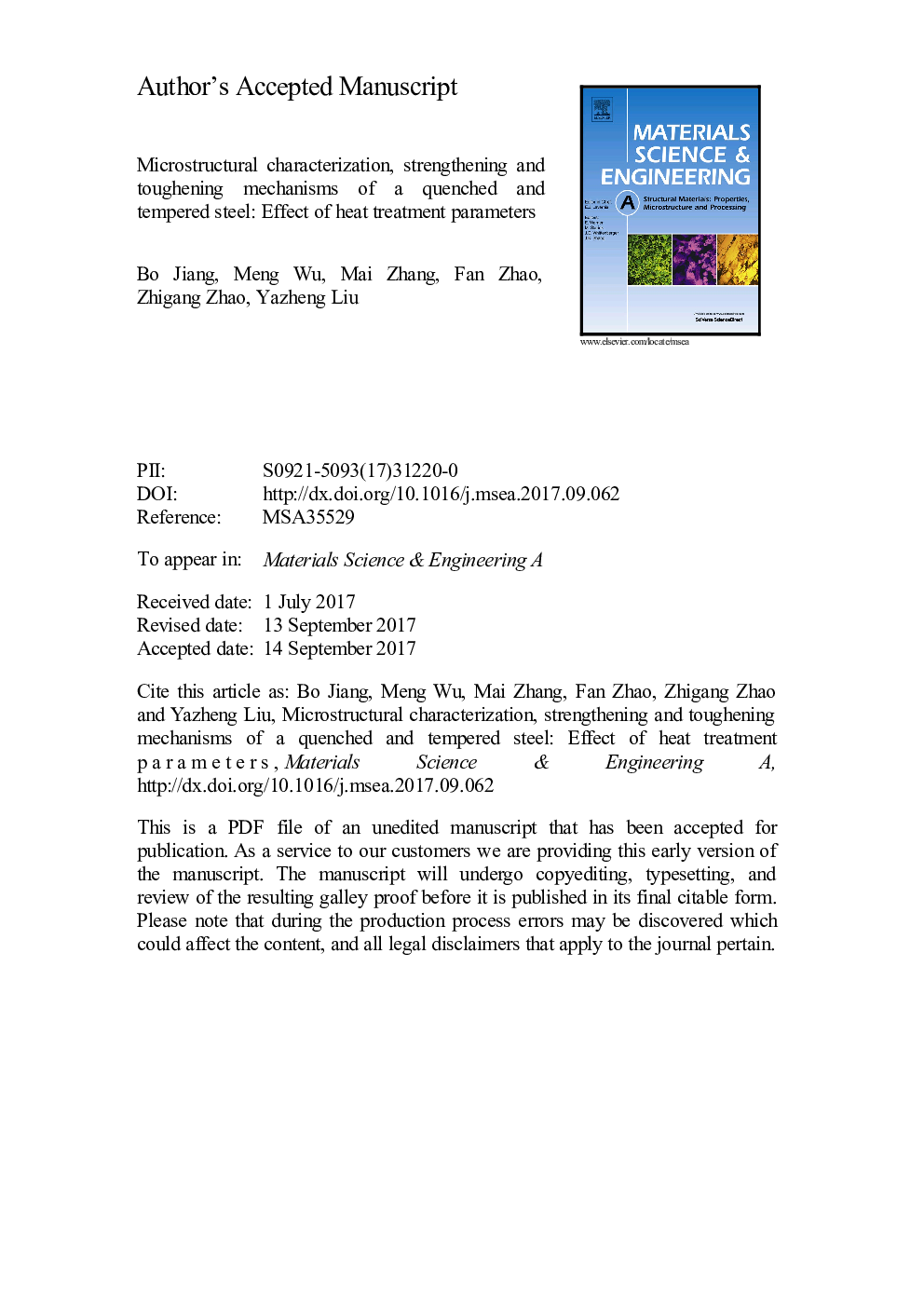| Article ID | Journal | Published Year | Pages | File Type |
|---|---|---|---|---|
| 5455237 | Materials Science and Engineering: A | 2017 | 22 Pages |
Abstract
A quenched and tempered steel for a large bearing ring was investigated. The heat treatment experiments were designed by using the L9 (34) type orthogonal form. Based on these conditions, a better combination of mechanical properties was obtained. The results showed that the quenching and the tempering temperatures were the most influential factors on the strength and toughness. The dislocation strengthening and the solid solution strengthening of the dissolved alloying carbides are the main mechanisms of increasing the strength by decreasing the tempering temperature and increasing the quenching temperature, respectively. The stripped carbides and long chain carbides strongly influence the differences in the tensile strength of the steels under different processes. The toughness AKv at â20 °C was increased by 42.2 J when the quenching temperature increased from 800 to 900 °C. The stripped undissolved carbides at lower quenching temperature promoted crack propagation and cleavage fracture and thus decreased the toughness of the steel. The AKv was increased by 47.4 J when the tempering temperature increased from 550 to 650 °C. The long chain carbides distributed along the grain boundary and the martensitic laths with a high density of dislocations at the lower tempering temperature decreased the toughness. Oil quenching can improve both the strength and toughness by refining the martensitic microstructure.
Related Topics
Physical Sciences and Engineering
Materials Science
Materials Science (General)
Authors
Bo Jiang, Meng Wu, Mai Zhang, Fan Zhao, Zhigang Zhao, Yazheng Liu,
